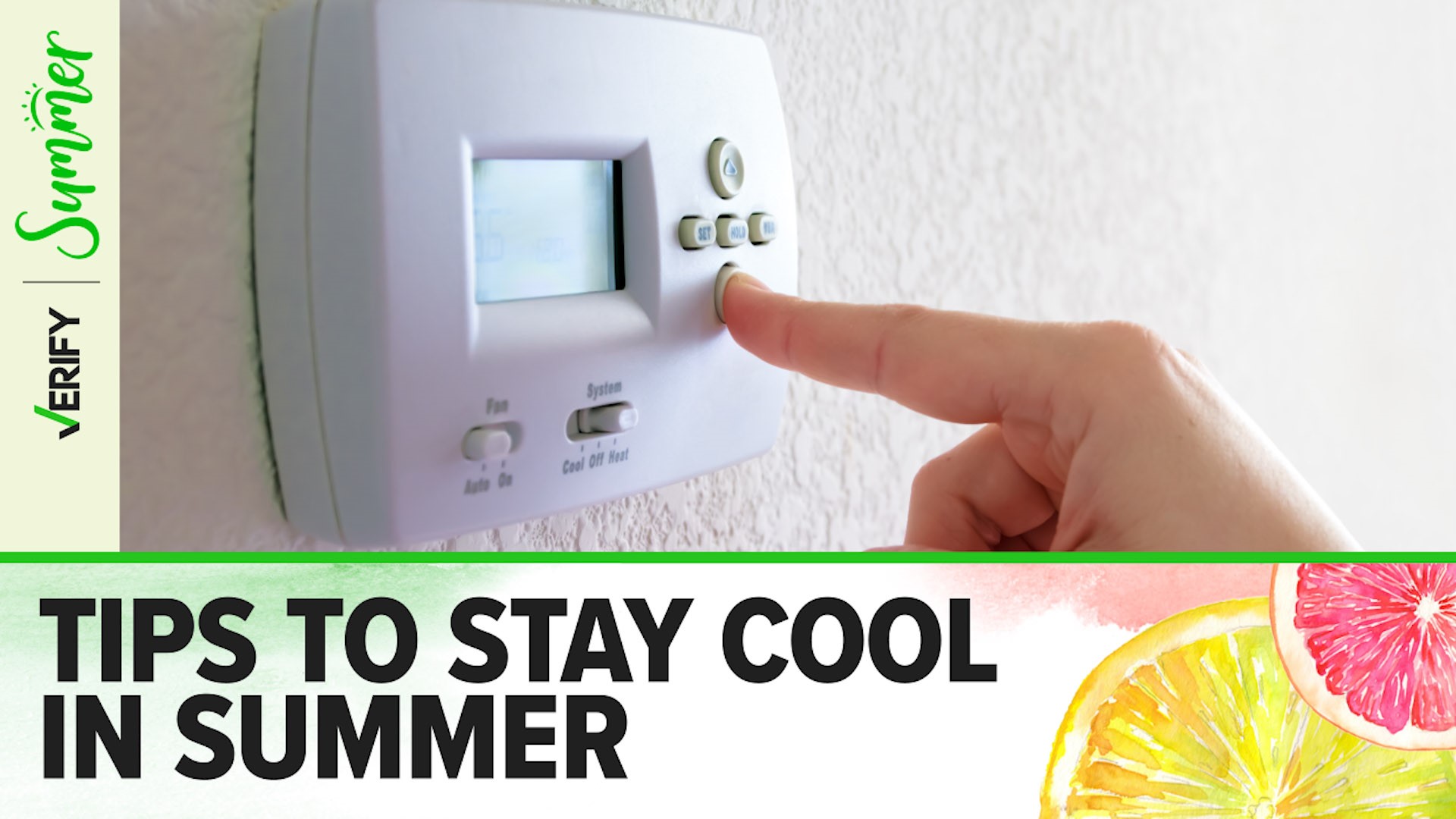Heat waves are bringing scorching temperatures to areas throughout the U.S. this summer
Many VERIFY readers have reached out with questions about how to save money on their energy bills and beat the heat during the summer months.
Here are five verified ways to help you stay cool and save energy at home.
THE SOURCES
- U.S. Department of Energy
- Energy Star
- Lowe’s
- Home Depot
- Federal Emergency Management Agency (FEMA)
- Frederick Air
- Logan Kureczka, spokesperson for Duke Energy in North Carolina
- Mahabir Bhandari, Ph.D., research and development staff at the Oak Ridge National Laboratory’s Building Envelope & Urban Systems Research Group
1. Close your blinds
Yes, closing your blinds and curtains will keep your home cooler and conserve energy.
According to the U.S. Department of Energy, 76% of the sunlight that hits a standard double pane window turns into heat. The agency recommends that you turn your blinds upward or shut them all the way to reduce the amount of heat coming into your home.
Lowe’s, a home improvement store, says closing curtains or blinds that face south and west during the daytime and picking white window treatments will help deflect even more heat.
2. Make sure your ceiling fan is spinning counterclockwise
Circulating fans, including ceiling fans, create a wind-chill effect that helps people feel cooler, even though the fans don’t lower the temperature of the room, the U.S. Department of Energy (DOE) says.
But for optimal effectiveness, your fan needs to spin counterclockwise in the summer because the blades will push cooler air down in a column, according to Home Depot and Energy Star, the federal government’s energy efficiency program.
A ceiling fan spinning in the correct direction can also save money, because people can raise their thermostat by about 4 degrees without feeling warmer, thanks to the fan’s cooling effect.
To change your ceiling fan’s direction, check for a small switch beneath the blades and click it to make the fan rotate counterclockwise. Remember to turn the fan off when you leave the room, too, in order to save energy.
3. Know when to leave the air conditioning on or off when you’re gone
When temperatures climb in the summer, turning on your air conditioning can drive up your electricity bill.
Logan Kureczka, a spokesperson for Duke Energy in North Carolina, says it’s more energy efficient to leave the air conditioning on if you’re just leaving for the day, but you can turn it up a few degrees higher than you would if you were home.
That’s because it actually takes more energy to start up your air conditioner and cool your house than it does to keep it slightly warmer than usual when you’re away.
However, if you're going to be gone for an extended amount of time, you will save the most energy and money if you turn your air conditioning unit off, Kureczka said.
RELATED: Yes, it's cheaper to leave your air conditioner on all day than to turn it off when you're gone
4. Set your thermostat to the right temperature
The DOE and Energy Saver recommend setting the thermostat in your home at 78 degrees to save the most money.
It’s 10% cheaper on average to run the air conditioner at 78 degrees for 8 hours a day than running it at 74 degrees for the same length of time.
HVAC specialists also recommend that you follow the 20-degree rule. For example, if it’s 95 degrees outside, you should set your thermostat to 75 degrees. If it’s 100 degrees, set your thermostat to 80. This will prevent strain on the air conditioning unit.
5. Put aluminum foil over your windows in an emergency situation
Window reflectors, including aluminum foil-covered cardboard, are one way that people can combat extreme heat in an emergency situation, the Federal Emergency Management Agency (FEMA) said in a 2019 blog post.
Mahabir Bhandari, Ph.D., a member of the Oak Ridge National Laboratory’s Building Envelope & Urban Systems Research Group, told VERIFY he believes it would be more effective to cover the windows from the outside rather than inside the home.
The aluminum foil might transfer some heat through the window as it gets hotter, but that’s where the cardboard comes into play. It will act as insulation and absorb the aluminum foil’s heat, meaning the window and the room behind it won’t get as hot.

